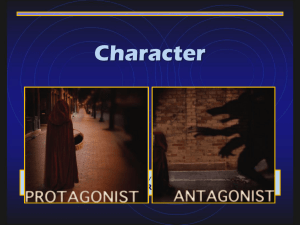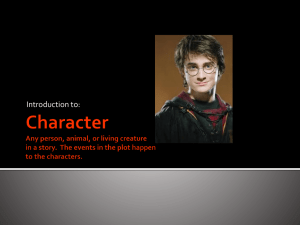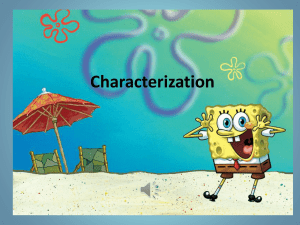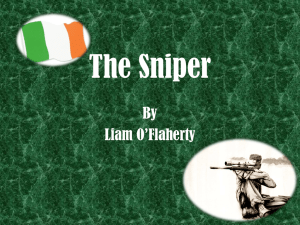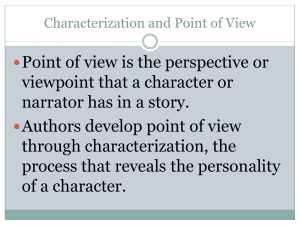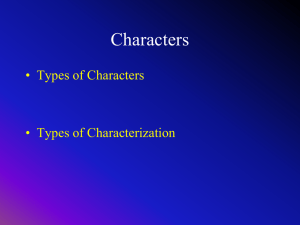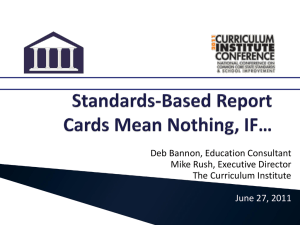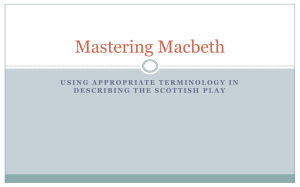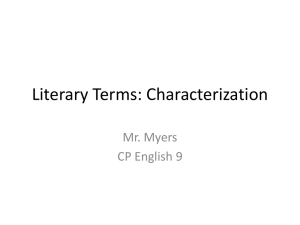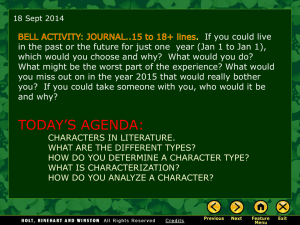Direct and Indirect Characterization
advertisement
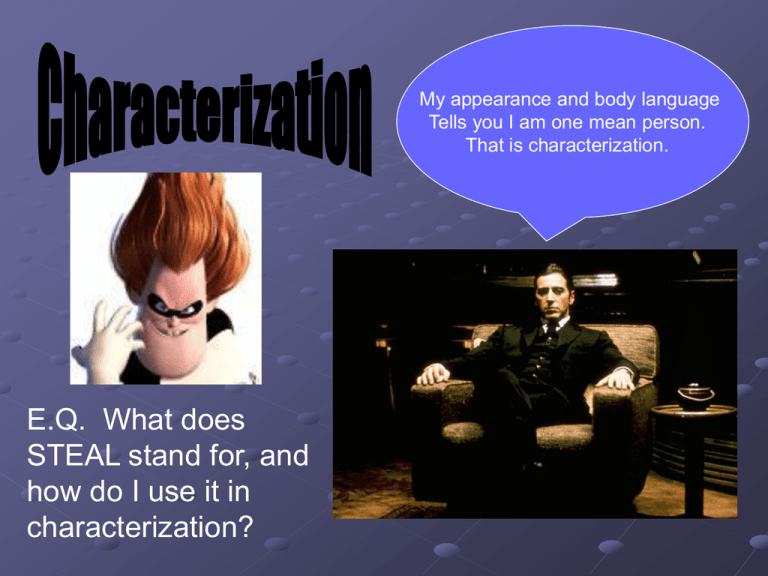
My appearance and body language Tells you I am one mean person. That is characterization. E.Q. What does STEAL stand for, and how do I use it in characterization? What is Character? A person or animal who takes part in the action of the story, play or other literary work. What/Who is the Protagonist? The protagonist is the major character of the work, action revolves around them. They are the one with the major conflict to resolve. What/Who is the Antagonist? The antagonist works against the protagonist. It can either be another character or thing. Big Picture vs. In the Moment Characterizations mostly build an overall picture of a character Don’t be tricked… Example: Anger in one scene does not necessarily make that character an angry person Look for the big picture of a character Two Types of Characterization 2 Direct Indirect What is Direct Characterization? Direct characterization TELLS the reader what the character is like The author simply TELLS the reader what the character’s traits are “They were the laziest couple on the block. Most of their days were spent sitting on the couch, watching television and eating themselves into oblivion.” Direct Characterization The writer simply tells us what the character is like “Billy was painfully shy. He suffered from the insecurities of his small size and could not imagine himself as someone people would like.” What is Indirect Characterization? Indirect characterization SHOWS the reader what the character is like The author uses descriptive language to show what the character’s traits are More subtle than direct characterization, but usually more powerful “Ralph and Zelda sat like zombies, staring at the television. This was the 20th hour they had been sitting on the couch in the last 2 days, doing nothing but eating and gazing at the screen.” What is STEAL? S–T–E–A-L We use the acronym STEAL to reveal who a character is through indirect characterization. Be Careful! Not ALL dialogue will tell us something about the character The dialogue must make a characteristic of the character in question come to life very clearly “He stole off to Teddy’s bathroom, but there was nothing there” (Kipling 27). “Rikki-tikki was too well bred to bite or scratch, but as soon as Teddy was asleep, he went off for his nightly walk around the house . . . (Kipling 27). Speech – What a Character Says “Hey Joey, want to come to the movies with us tonight?” his friend Mike asked. “No way,” he replied. “The movie’s lame. I don’t feel like doing anything. The popcorn will probably make me sick anyway, the seats will be dirty, and you can’t talk during the movie. It would probably be a disaster.” Thoughts – What a Character Thinks “I can’t believe she likes this dress. It’s going to look horrible on her.” “I love it. It would look great on you.” “Isn’t this dress cute?” Do their thoughts match their actions? If not, what does it say about their character? E The ffects of the Character’s Actions on Others “The gunman strode into the bar. Immediately, the place seemed to shrink from itself. Everyone subconsciously moved a step away from the door or subtly shifted their chairs. Most looked away. The bartender continued to polish the bar, but moving slowly away from the shooter as he polished. Animated conversations stopped instantly. No one breathed. The gunman stopped, watched this happen, a tiny smile slowly appearing at the corners of his mouth.” A Character’s Actions Scar had the hyenas start a stampede so that Mufasa would be killed by the frightened wildebeest. What do his actions say about him? Character’s Looks (Appearance) Author’s use a character’s look to help you decide their true character. What Does it Say? The importance of characterization lies in what the characterization says about the character. What does it tell us about the character? STEAL a Characterization of yourself! On the back of your notes write the acronym STEAL and answer the characterization on your own. S – does what you say reflect who you are? T – What do your thoughts say about you? E – How do you effect others? A – Do the things you do reflect who you are? L – How do your clothes reflect who you are?

